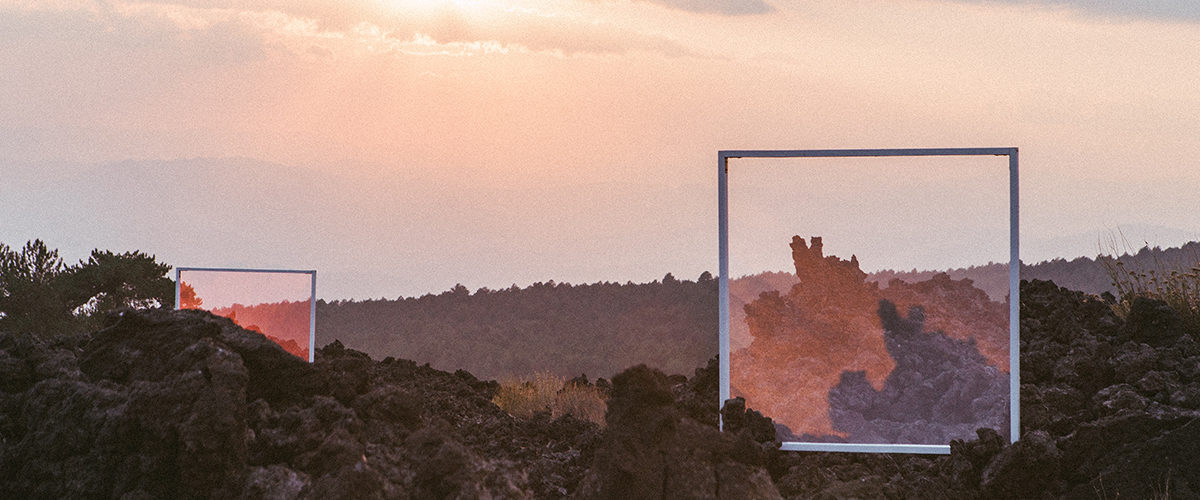
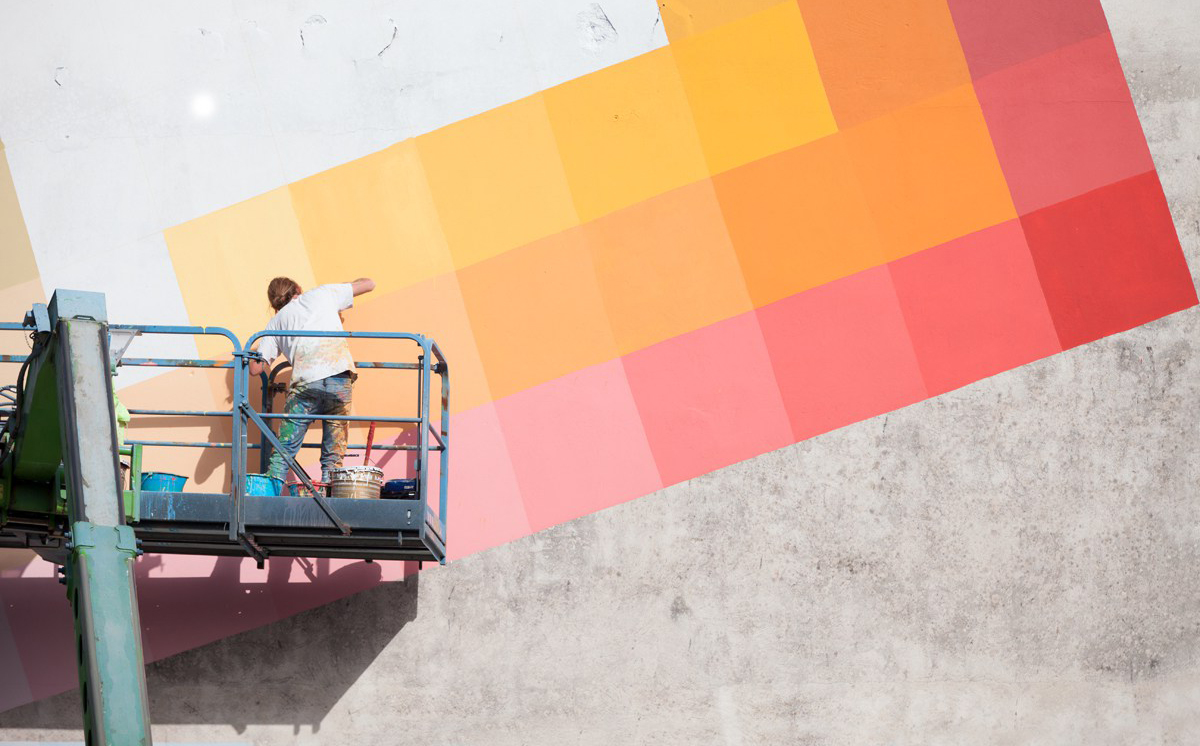
Alberonero is the artist bringing pixels back to real life.
New year’s resolution: strive to bring more inspiration, more fun, more art and more people to these virtual pages. And we start with Luca Boffi, a name that rings more than a bell in the milanese art scene. You may have heard of him already with the moniker Alberonero. He is the man behind huge murals made of simple shapes with the simplest colors. Flat colored squared, one next to the other, composing a massive colorful grid able to shut everyone’s mouth up. His works could be find anywhere in the world, from Sicily to Brazil. We couldn’t be any happier to have him here. Talking creative habits, inspiration and…enjoy it. Ciao!
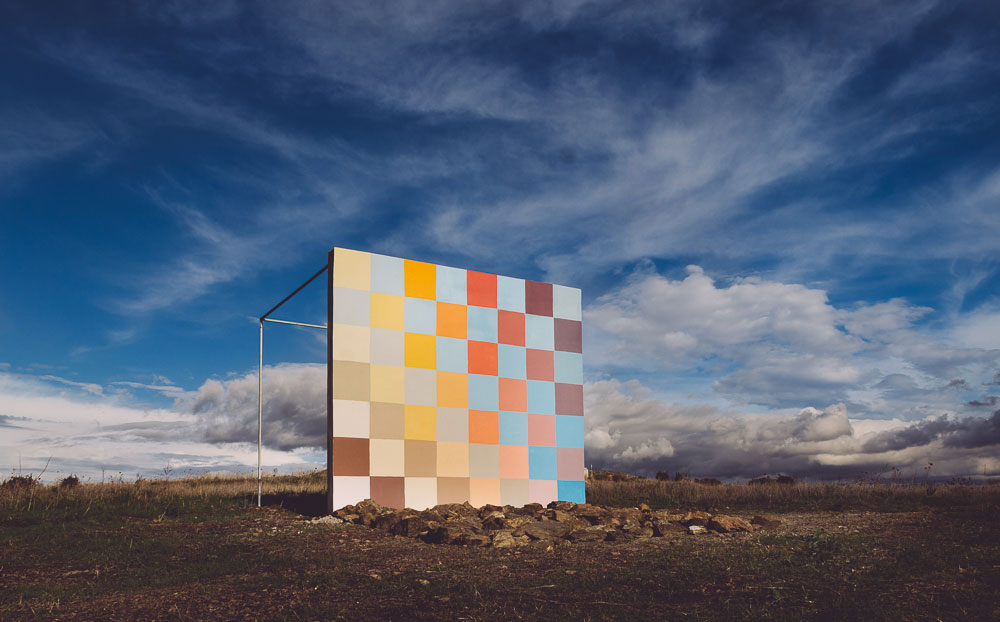
Ciao Luca, would you tell Uncovered who you are how you gave birth to Alberonero?
Alberonero is a project born in 2009, in the Lagorai Alps, Trentino. I was born in Lodi, and I’ve started drawing pretty soon. Whether it be night-time graffiti, stencil or poems. My street attitude changed as soon as I began studying at Politecnico di Milano, where I started developing a different idea of art. I stopped doing graffiti and I started drawing my colored squares in 2012, when I was still studying color theories. In 2013 I also started working with nature and installations. I’ve always loved brutalism, contemplation, repetition, invisible and daily life.
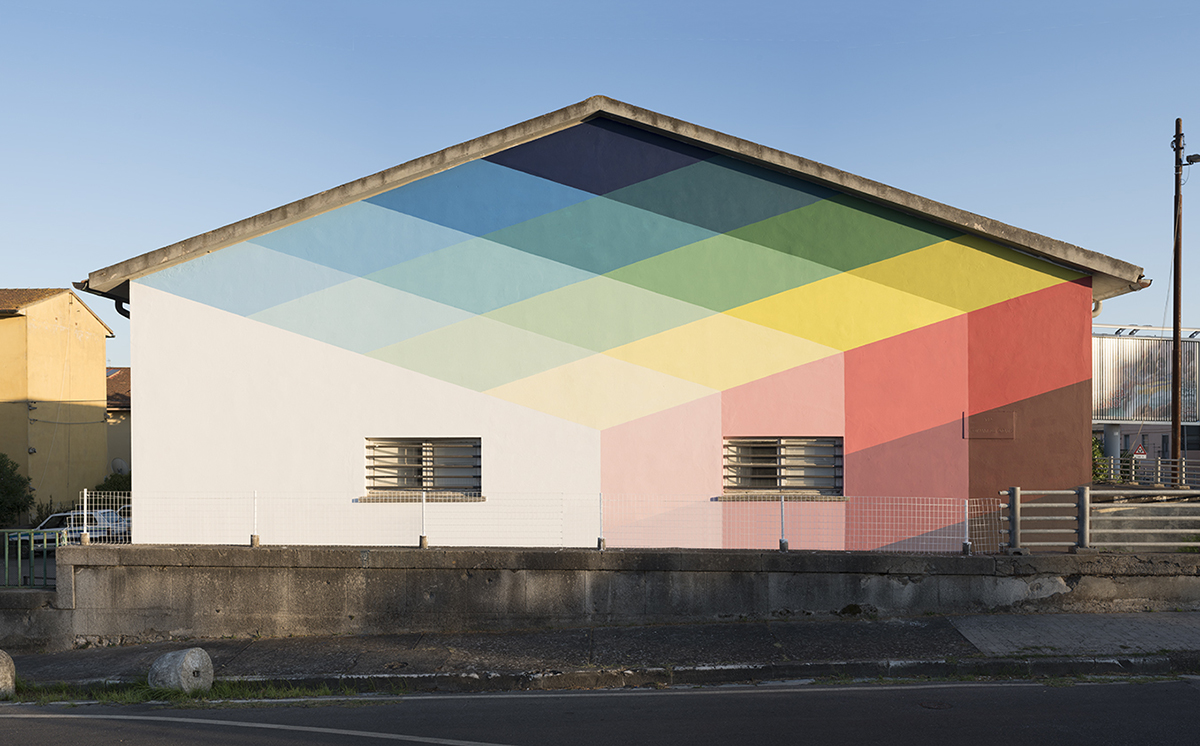
Talking about daily life and habits, what’s yours?
I always wake up early and go straight to work. I think morning is the best time of the day to produce something. I do really feel inspired. As an artist I am always looking for silent and intimate places, and my very favorite one is still the countryside. As a living soul I am always looking for collaborations, friends and shared experiences.
We can find your works on city walls, in boundless countryside but also in art galleries. How is the work space of a traveling artist like you?
My current workspace is an old stable, in the countryside nearby Modena, Emilia. The previous tenant was actually a horse. I am able to better focus when almost nothing is around me, just some cats and trees. Right now it’s the most efficient way to evolve my artistic path.

Where do you draw inspiration and what are your main influences?
I have a bachelor degree in Interior Design, the heroes of my life were product and interior designers. But I have always been fascinated by colors, architecture and nature. Bauhaus school, Klee and Albers are my biggest inspiration in painting. As well as Malevich, Rothko and Sol Lewitt. I find inspiration in everything around me. Cities, buildings, and the amusing relation between architecture and the people who live them. It’s also important to find some time and spend a few days in contact with nature. I love walking the woods and mountains, this is where the name Alberonero comes from.
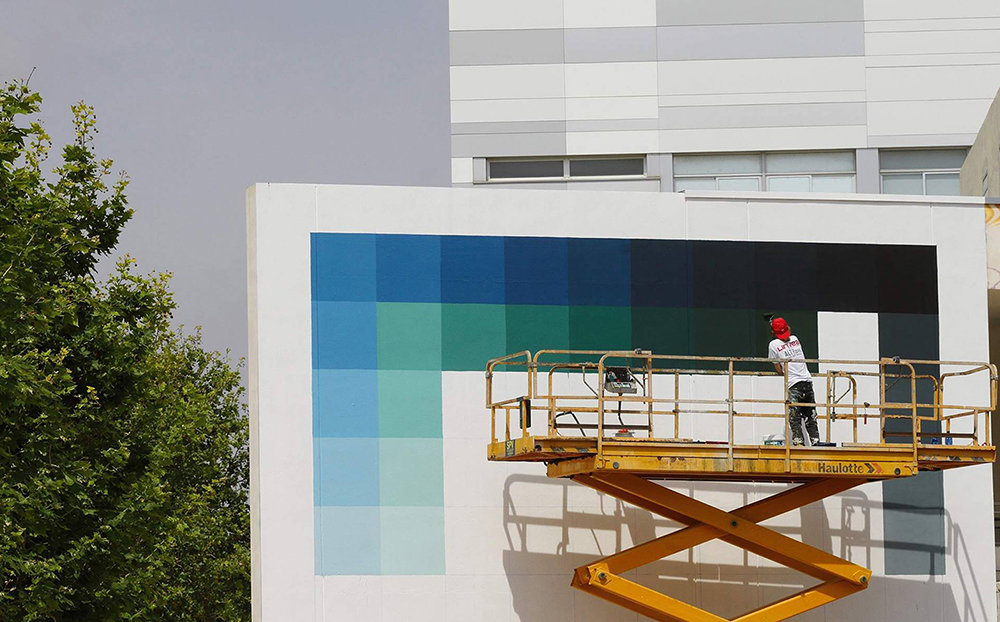
How did you develop the well-defined style that sets you apart from your colleagues? Have you had blue or pink periods, for instance, or something that you like to share?
Blue to me is infinite, quite and rest. It doesn’t happen that much to feel this way, my mind as well as my body always move. In people and in arts I am always looking for calm and order. My work, in painting, is the result of an automatic action in which I analyze and study the quantity of colors I could reproduce on a building. The physical effort in painting any of my murals is huge, and it pushes me to a kind of zen status, which isolates me from everything else around. Blue, together with green, is the first color to be noted by our eyes, and the most pleasant to look at. I use blu paints as metaphors of the sky. Otherwise I use mirrors or ceramic materials in order to reflect it. This is my way of bringing the sky into our physical world, a representation of our attempts of getting in touch with it.
Pink to me is intimacy, love and childhood. I use it when I need to magnify playful details or feminine ones. Pink is the sexiest color. I also am really close to child-related thematics. Before starting with my geometries I spent tones of time working on ludic projects such as toys or playgrounds. And the perception of my work on young boys and girls is the greates inspiration.
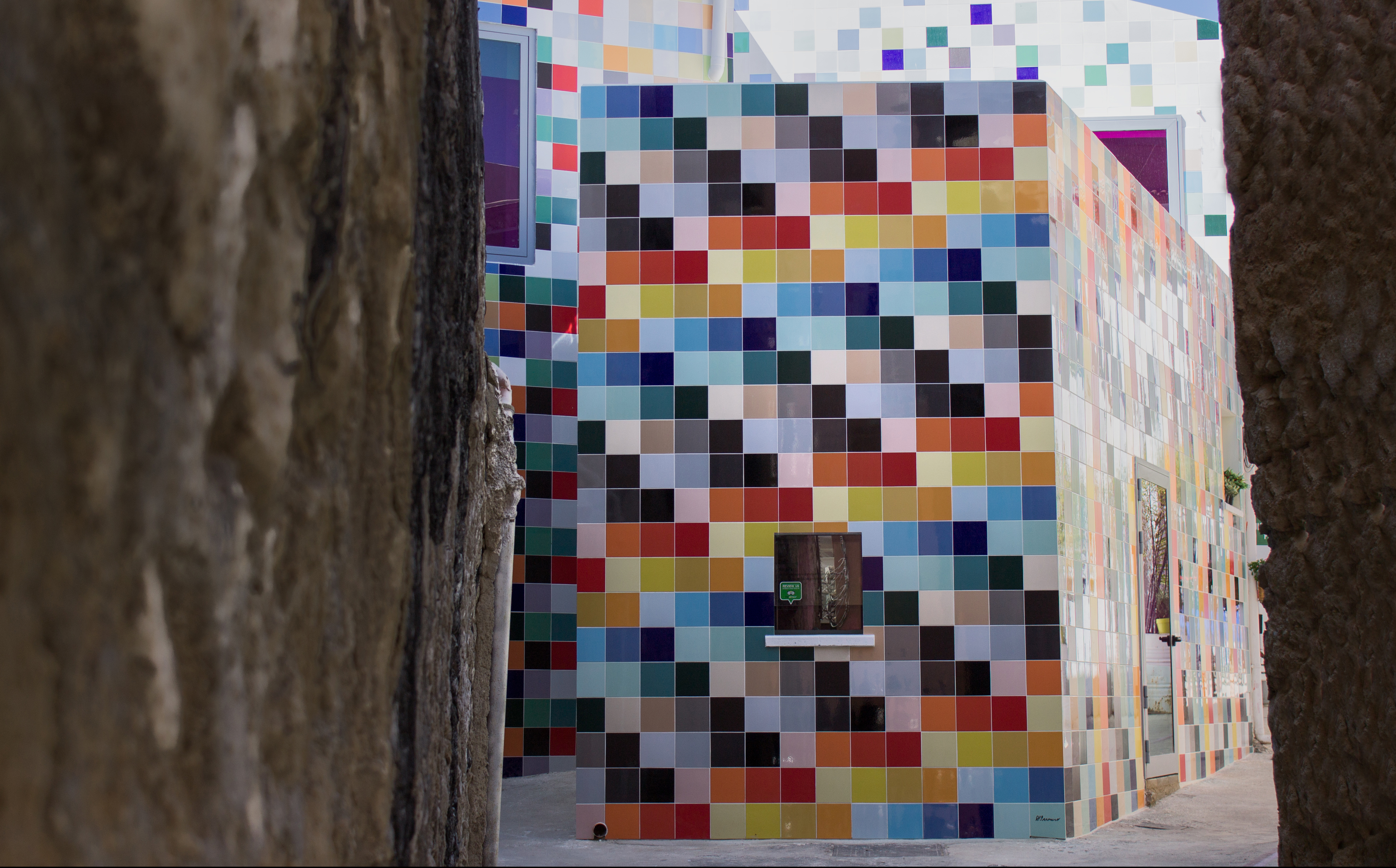
In your work we can notice a huge interaction between genres. A study of contemporary color, often typical of digital disciplines, is applied to the oldest media of all time: architecture. How would you describe your approach to old and new media?
I love contrasts and what comes with them. Pixels are the contemporary icons, and when I started drawing them there wasn’t anyone else doing it, at least not as much compulsive and meticulous as me. The pixel was my excuse to represent something that is not real, but yet it enabled me to put in line different colors in a predetermined scheme. I wanted my art to be as simple as possible and easy to understand. I’ve never thought of something slightly decorative. When I am drawing my pixels and mixing colors I am led by a mathematical scheme, and I never use pre-existing paints. Lately I have been also working with sculpture and nature. I seek natural colors and by changing shapes I switch the perception the viewer has on them. I have always been using raw and poor materials, which you can easily find anywhere. I love cement, steel, bricks and plates.
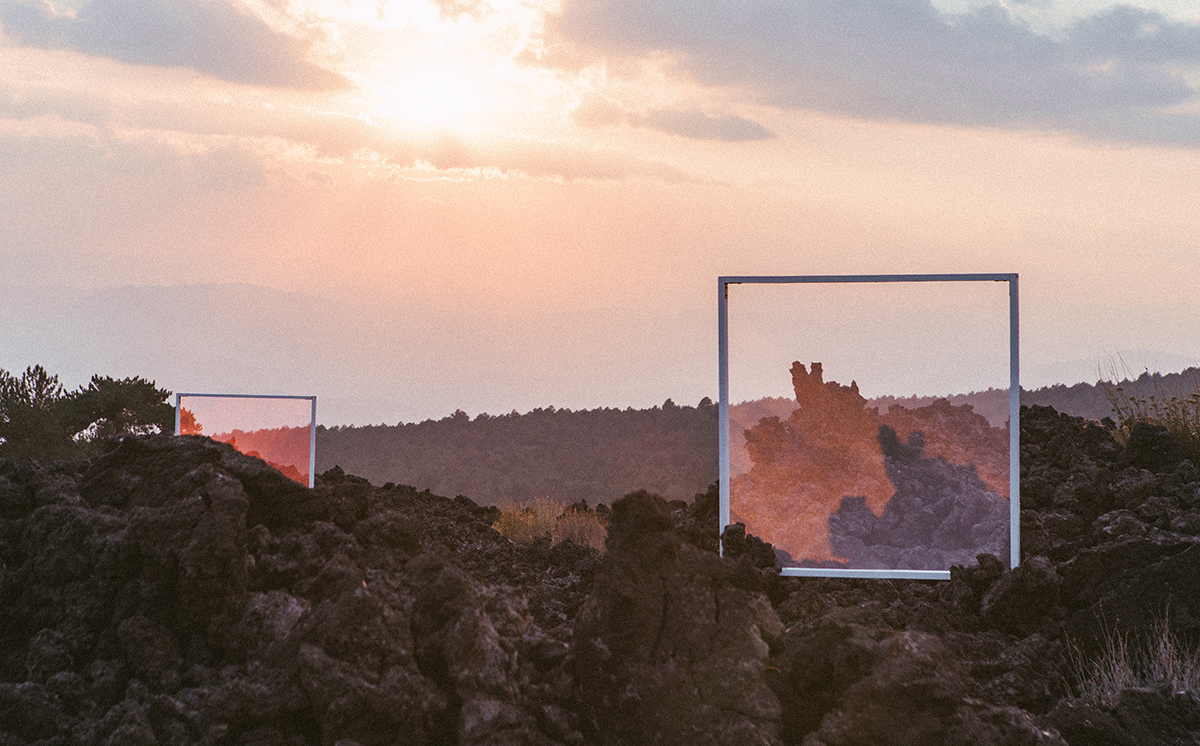
Last but not least: any advice for all the creative heads out there?
I am not the best at giving advices, but to me was important studying what I had around and translating it into something personal. At the same time as consistency and hard work. Devote yourself to who you are.
